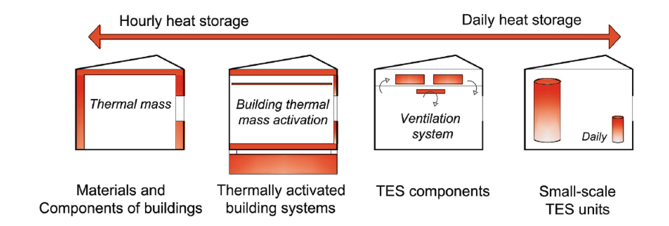09 Feb 2023
How heat pumps can keep homes warm without frying the power grid
Heat pumps will help us address the climate crisis and the energy crisis, but flexibile solutions are necessary to avoid overloading the electricity grid

We are in a winter of intersecting crises in the UK. After the record of maximum temperatures last summer and an unseasonably warm autumn, the climate crisis is an inescapable part of life. Meanwhile, the energy crisis continues to loom large over Europe with restricted gas supplies and people’s increased use of their central heating. Heating our homes with natural gas contributes to both of these crises by emitting greenhouse gases and making us reliant on a single fuel to stay warm, exposing us to shocks in the market. Currently, the heating sector in the UK is dominated by natural gas – with 85% or about 24.5 million homes using natural gas as their predominant source of heating.
Heat pumps are a key tool for households to address the climate crisis and reduce fossil fuel dependence. The UK Climate Change Committee recommends them as a crucial part of the UK’s plan to reduce carbon emissions from residential heating. Heat pumps work similarly to refrigerators and air conditioners, but in reverse: they heat homes by using electric power to move heat from outdoors to inside our homes, even when it’s colder outside than inside. Even though they are powered by electricity, they’re much more efficient than storage heaters or other electric heaters because they use electricity to move heat rather than to produce heat. Additionally, they are cleaner than gas boilers since they do not emit air pollutants.
Thanks to the higher efficiency of heat pumps compared to existing heating technologies, we could reduce final energy demand and mitigate the impact of the energy crisis by replacing our existing gas boilers with them. In the UK, for every unit of electricity a heat pump uses, it moves 3 to 4 times as much heat into your home as a gas boiler produces. So even if gas provided 100% of the UK’s electricity, we would use less gas to heat homes with heat pumps. This higher efficiency of heat pumps can also help get similar or lower energy bills since electricity costs are typically 3-4 times higher than gas costs.
We do not have to wait for cleaner power generation to reduce carbon emissions from heating our homes: switching from a gas boiler to a heat pump reduces the carbon emitted to keep your home warm, even with the current UK electricity generation mix. A recent study, by researchers in the Energy and Power Group at the University of Oxford’s Department of Engineering Science, shows that British households can reduce their carbon emissions from heating by nearly two-thirds in the short term by using a heat pump instead of a gas boiler. “Carbon savings can be increased further to 70.5% by making residential buildings more energy efficient. Replacing old windows, adding loft insulation, and improving airtightness could easily reduce heating demands by more than 20% for equivalent thermal comfort”, says lead author and Engineering Science researcher Jesus Lizana.
Despite the environmental benefits, switching to heat pumps introduces a significant challenge for electricity supply: increasing electricity use at peak demand times. British domestic electricity demand is highest in the winter, with daily peaks in the morning before people leave for work and evening as people return home and prepare dinner. Heating demand follows a similar pattern: most British households heat in the morning before work and in the evening after work, turning heating down during the work day and overnight. Right now, these demand peaks occur on separate systems: the gas grid and the electricity grid. However, switching gas boilers for heat pumps will significantly increase peak heating demand in the electricity grid if uncoordinated.
Claire Halloran, co-author and DPhil student, tells us, “We show that if just 10% of British households switched to heat pumps it could increase peak electricity demand by 4 to 5%. This increase is nearly twice the power capacity of Hornsea 2, the largest offshore wind farm in Britain. Our projections are conservative compared to previous studies, which suggest a peak electricity increase of 7% - almost three times the power capacity of Hornsea 2.” If people heat their homes when generation from renewable sources is not available, carbon-emitting gas-powered generators may be used to meet peak demand, at least in the short term.
Scot Wheeler, a co-author researcher, states, “If uncoordinated, increased peak electricity demand will also substantially impact the network infrastructure that delivers power to customers. When this change is combined with other sectors relying more on electricity than in the past, such as Electric Vehicles, networks could require expensive upgrades, from large-scale transmission lines to local substations and distribution grids”.
To combat this demand for energy, flexible heating is a key solution. Lizana explains, "However, flexible heating requires a system-wide approach where new heating systems are integrated with heat storage, smart controls, and programs (or tariffs) that fairly reward and incentivize households to shift energy consumed for heating.”
Storing heat from heat pumps, into super-insulated water tanks or novel thermal energy storage materials, can provide the flexibility to store electricity at a time when demand is low and electricity is cheaper and then release it to heat your home when needed. This limits the need for new generation capacity and staggers the use of electricity throughout the day. “The big questions are: How big should the heat battery be, and what benefits can we get?”, Lizana asks.
The latest research from the Energy and Power Group shows that a heat battery that can store and release heat for between 12–24 hours could reduce the increase in required power capacity in the UK by 40-46%, and therefore reduce the need to reinforce existing electricity networks to fulfil the additional power demand.

Heat storage alternatives in buildings for hourly or daily flexibility strategies in heating electrification.
However, installing the technology alone is not enough to guarantee smart use. There need to be methods that coordinate smart integrated technologies that deliver fair payment to consumers to inspire the decision to shift energy demand. Many trials are already in place, such as new time-of-use tariffs designed for heat pumps, spot price contracts, National Grid’s Demand Flexibility Service (DFS) or local flexibility markets. Project LEO (Local Energy Oxfordshire) is one of the most ambitious smart grid demonstrator projects, testing real-world local flexibility markets on the low voltage distribution network in Oxfordshire, UK. Through a series of Smart and Fair Neighbourhoods and DSO market trials, Project LEO is demonstrating how to unlock the barriers to a smarter, more flexible, zero-carbon electricity system that could save between £1bn/yr and £5bn/yr across GB.
Lizana concludes, "Heating electrification through heat pumps should be considered as part of the solution and not as the sole technological solution for sustainable heating. It should be efficiently integrated with heat storage, smart controls, and programs that incentivize households to consume electricity sustainably. Sustainable energy generation requires sustainable energy demand"




